The vibrant yellow of Kuri no Kanroni catches the eye, offering a delightful experience that allows you to enjoy the natural flavor of chestnuts combined with a rich sweetness. Indulge in this sweet and delicate taste of Japan.
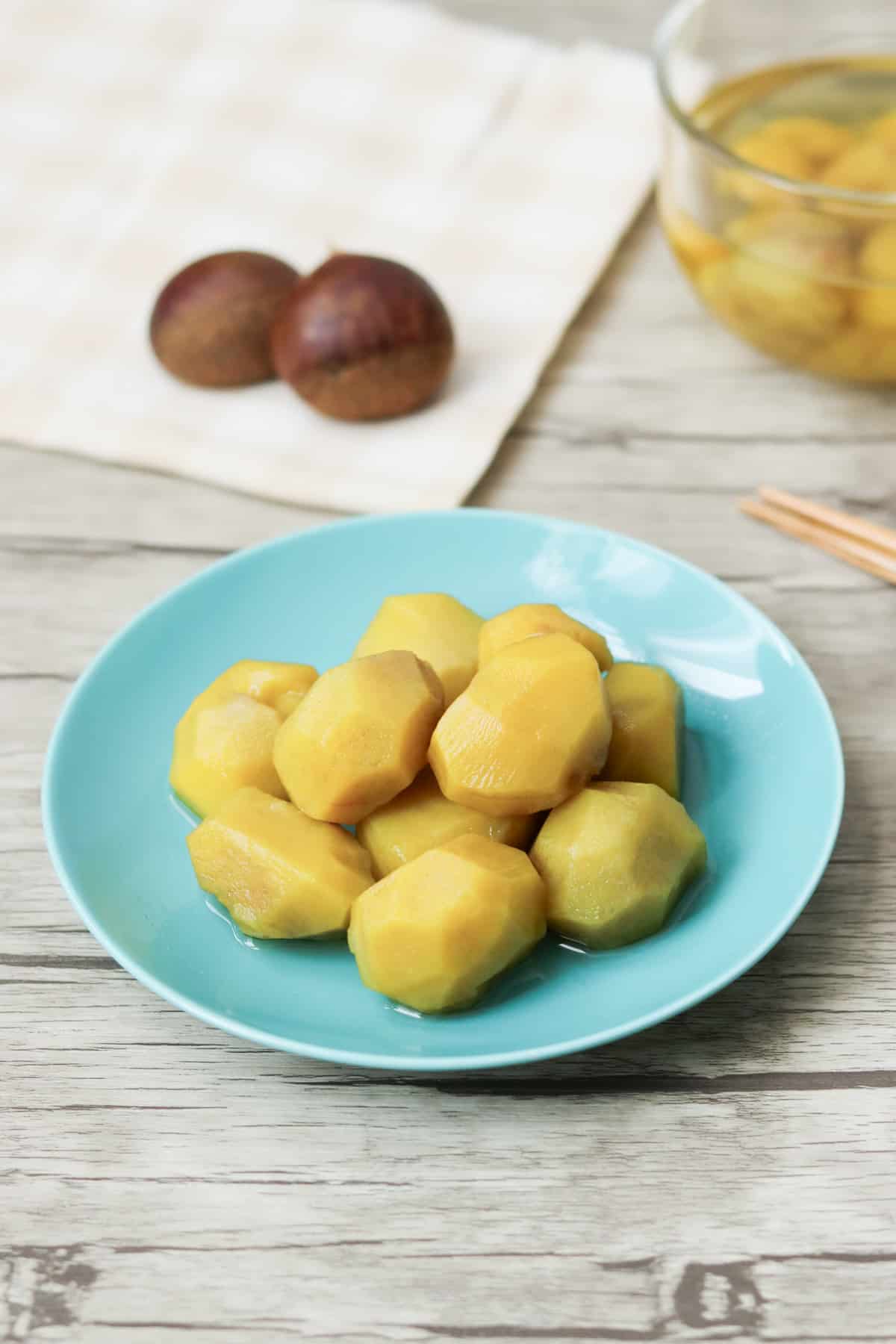
Jump to:
What is Kuri no Kanroni?
Kuri no Kanroni is a Japanese sweet dish made by simmering peeled chestnuts in sugar syrup. "Kuri" means chestnuts, "no" indicates possession (connecting the preceding and following words), and "Kanroni" refers to fruits simmered in sugar syrup. It offers a delicate balance, allowing you to enjoy the blend of chestnut flavor and rich sweetness.
The beautiful golden color of this dish is believed to bring good luck, so in Japan, it is often enjoyed during celebratory occasions like New Year's. It is also a familiar ingredient in Japanese sweet dishes or desserts, such as "Kuri Kinton" (mashed sweet potatoes with candied chestnuts) and "Kuri Yokan" (Japanese sweet red bean jelly with chestnuts).
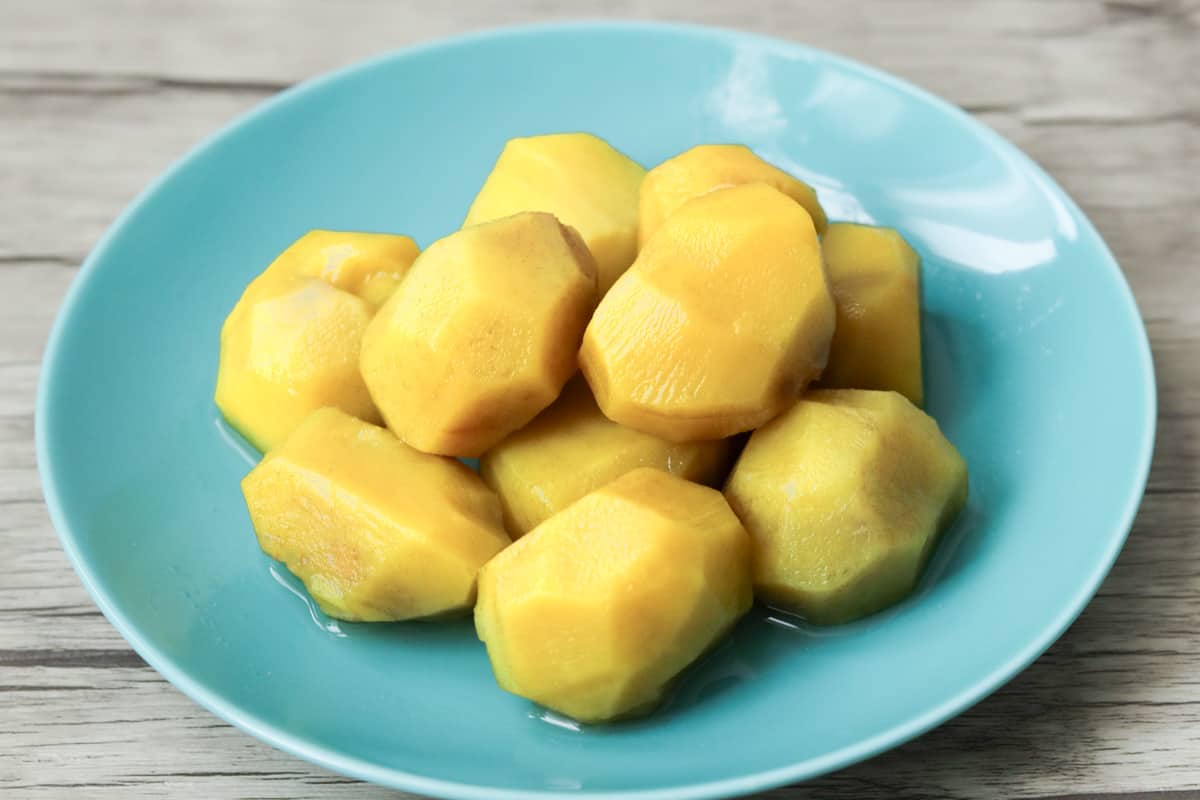
The source of bright yellow
Chestnuts have a yellowish hue, but achieving the vibrant yellow of kuri no kanroni is not possible with chestnuts alone. To attain this color, gardenia pods are required. Gardenia pods are a natural dye, and when simmered with chestnuts, they turn the chestnuts a brilliant yellow.
Can you find gardenia pods in your area? If not, you can still prepare this dish. Although it won't achieve the vivid yellow color, the flavor remains unchanged. In Japan, it is also common to prepare this dish without gardenia pods.
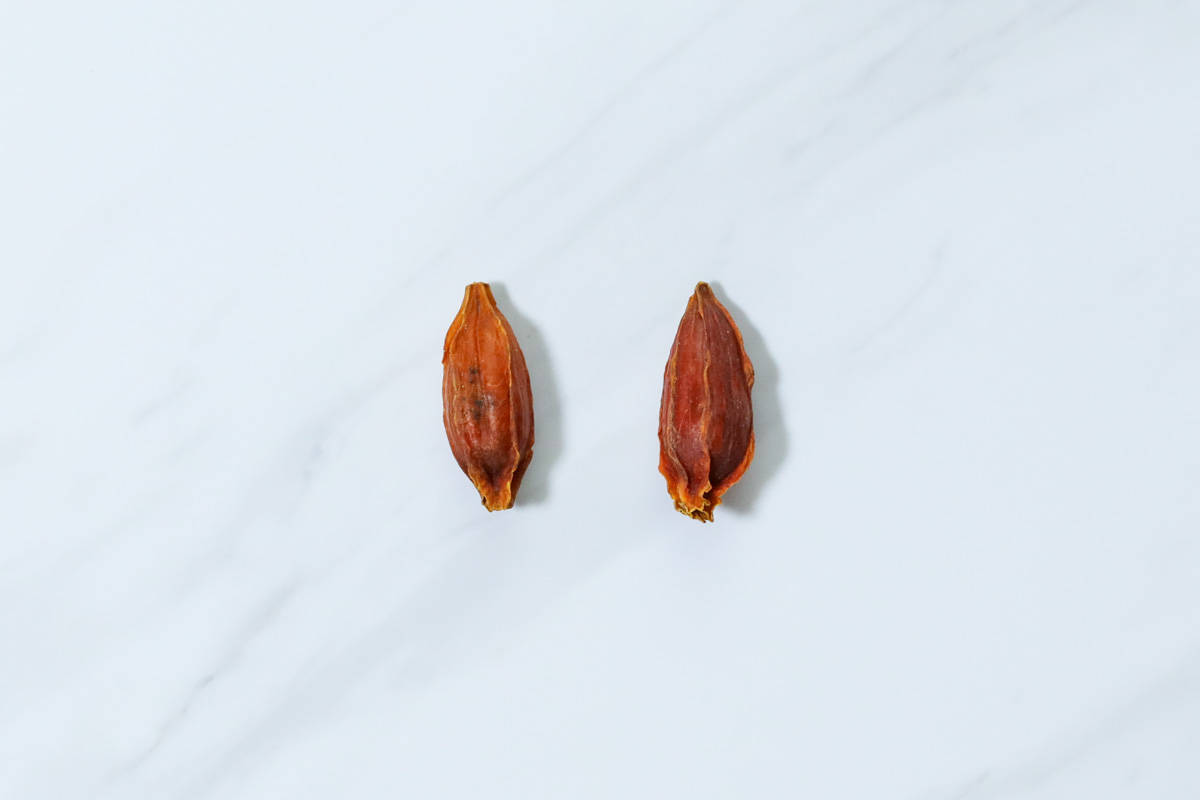
Preparation of whole chestnuts
When preparing this dish using whole chestnuts, there are three essential steps: peeling the outer shells, removing the inner skins, and eliminating the harsh aftertaste. Therefore, if you are planning to use a large quantity all at once, it is important to keep in mind that a significant amount of time and effort will be required.
While you can skip all of these steps by opting for commercially available peeled chestnuts, I still recommend using whole chestnuts, as they offer superior flavor.
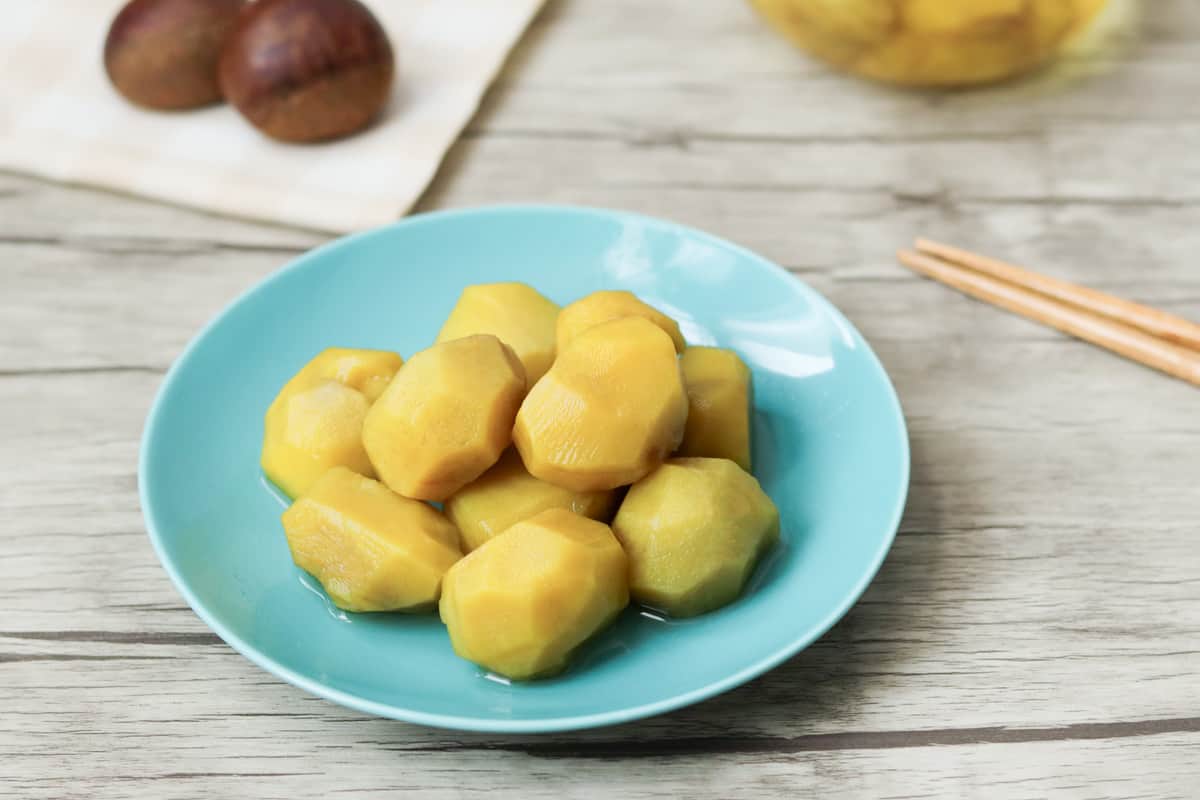
📋Step-by-step recipe
Ingredients
- 1 lb whole chestnuts (When using peeled chestnuts, adjust the amount of whole chestnuts to 70%.)
- 1 dried gardenia pod (optional for coloring)
- 1 ½ cups water (for the step 5)
- ⅞ cup white sugar
Instructions
🕒 Total: 14 hrs 50 minsIf you are using peeled chestnuts, start from step 4.
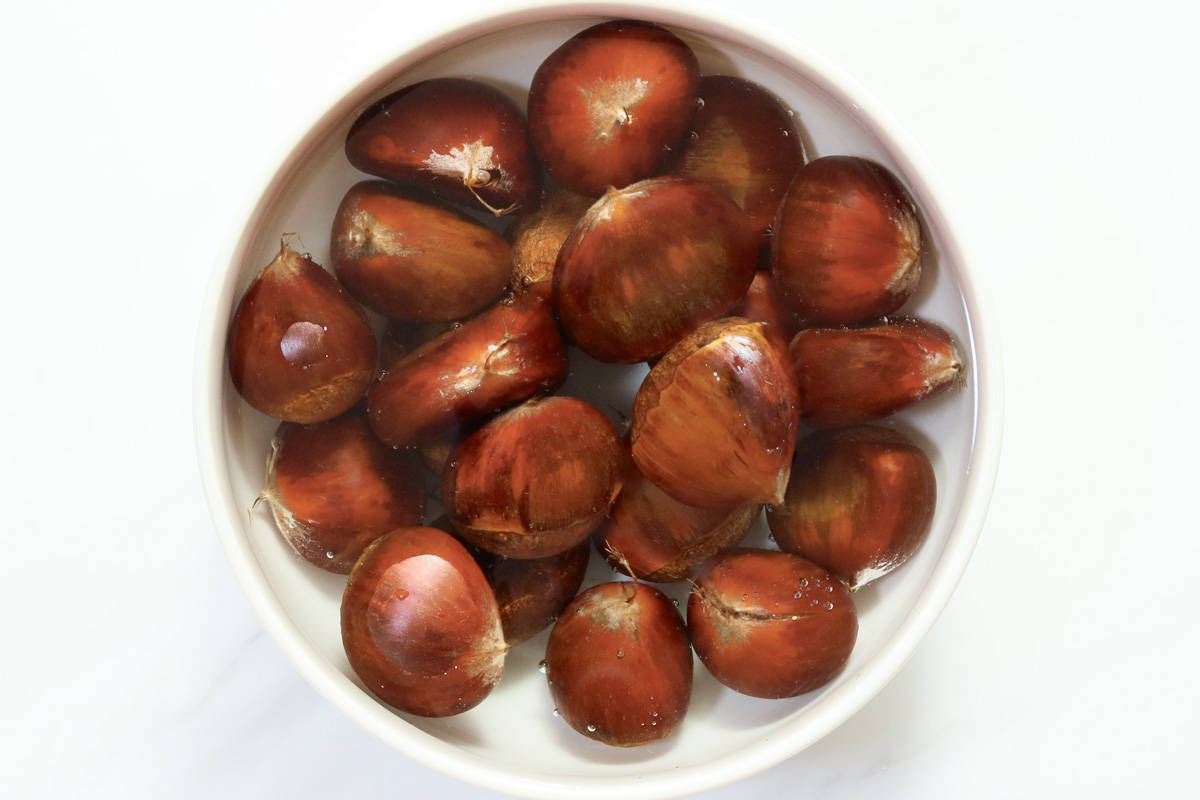
Step 1
Soak whole chestnuts in water for at least 1 hour, or in warm water at around 122℉ (50℃) for 20 minutes.
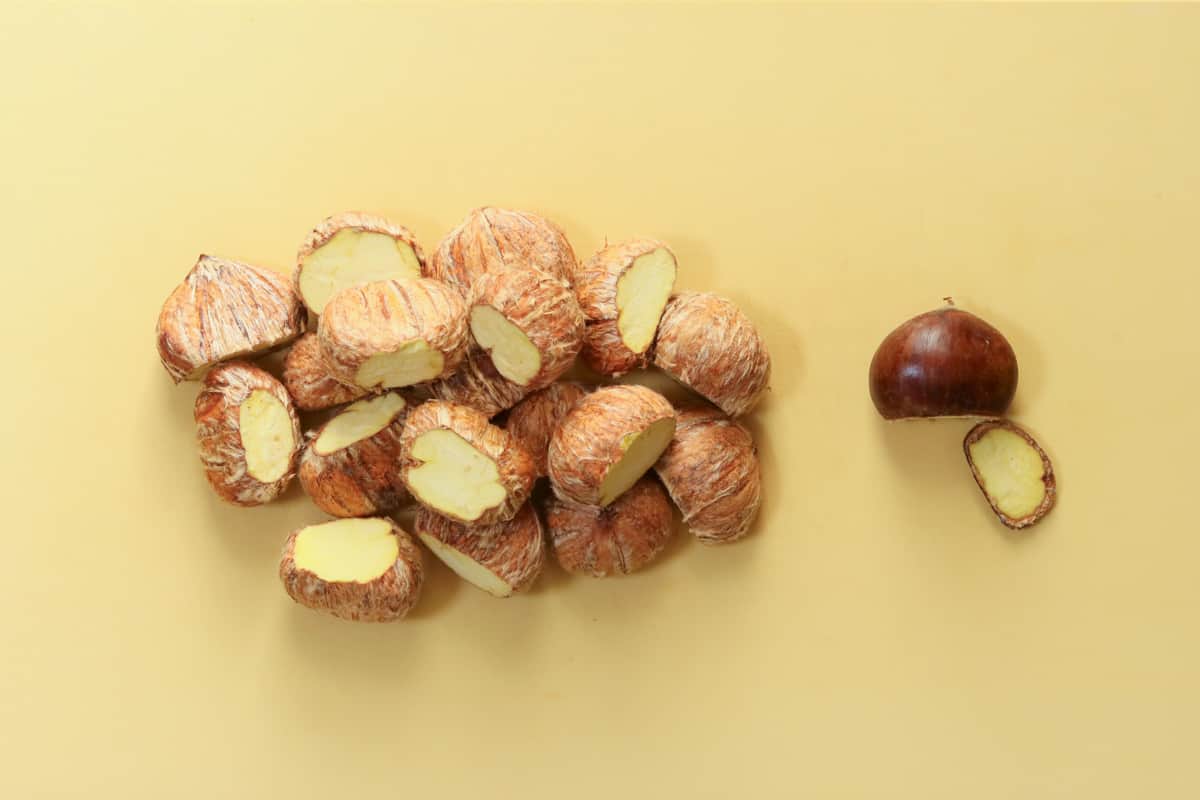
Step 2
Cut off the bottom part of the chestnuts and peel the outer shells.
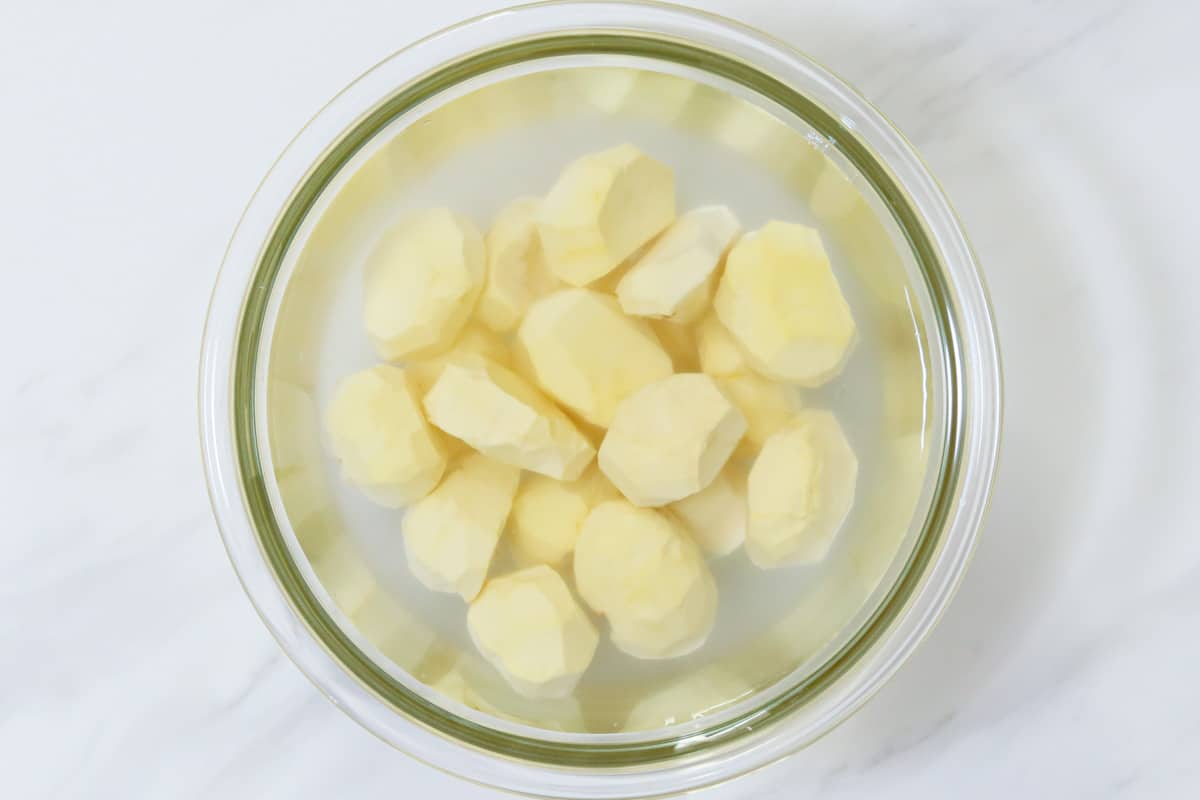
Step 3
Remove the inner skins from the chestnuts thoroughly with a knife. Fill a bowl with water and place the peeled chestnuts in it. Soak them for 30 minutes, changing the water when it becomes cloudy.
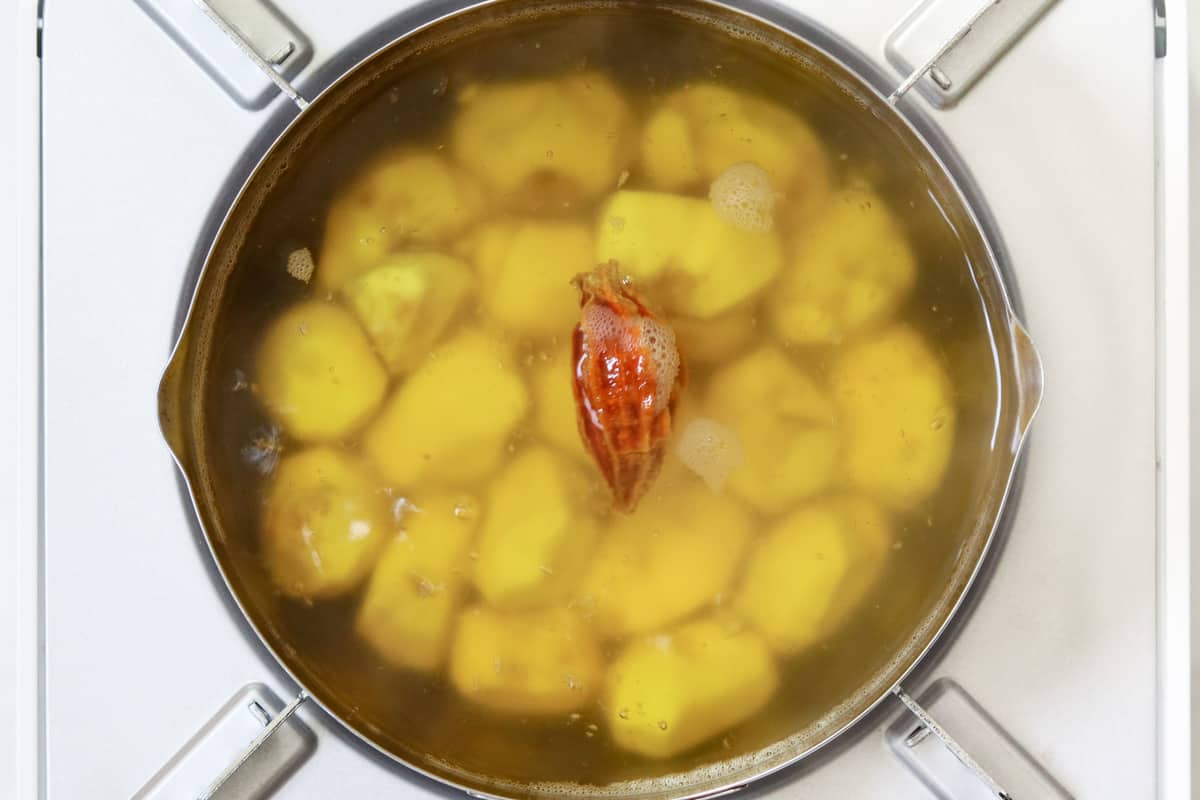
Step 4
Crack gardenia pod using the handle of a knife or pliers. Put water (not listed in the ingredients) in a pot and bring it to a boil. Once boiling, add the chestnuts and cracked gardenia pod, and let them simmer over low heat for 15 minutes.
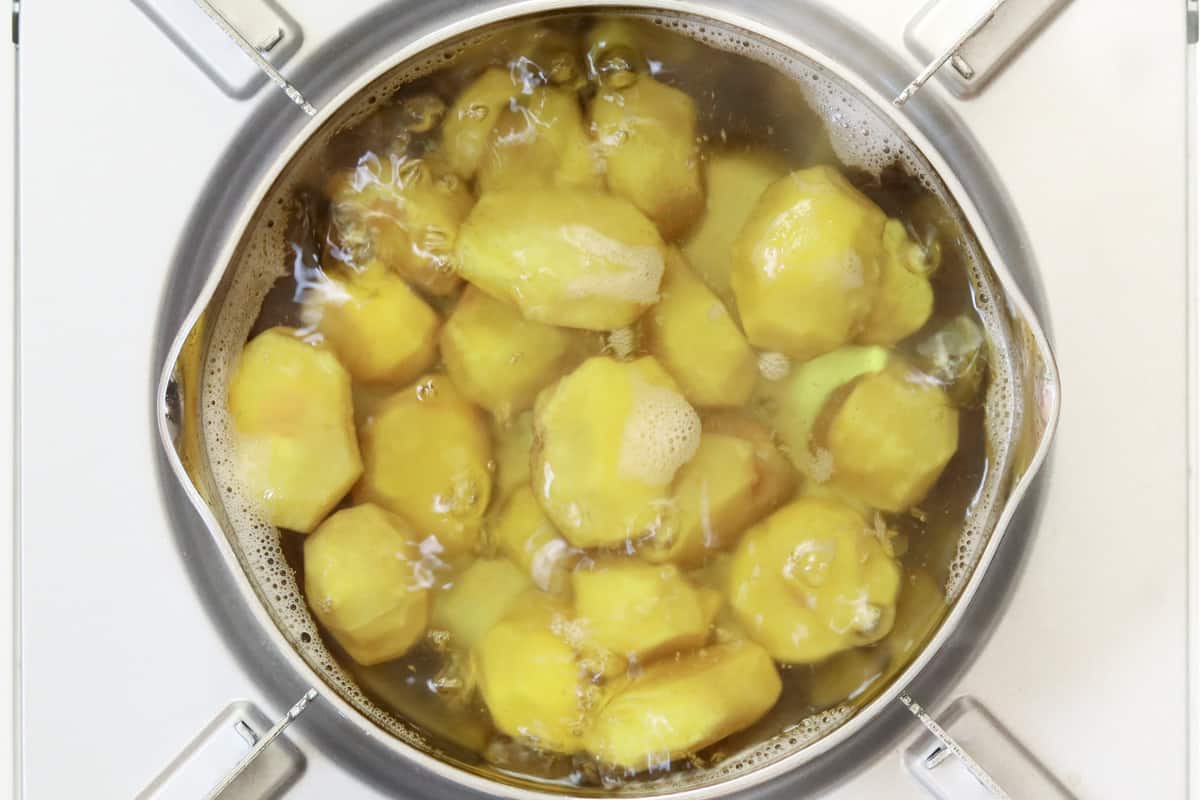
Step 5
Strain the contents of the pot through a colander, being careful not to crack the chestnuts, and discard the gardenia pod. In another pot, add the chestnuts, water (as specified in the recipe), and sugar, then bring it to a boil. Once boiling, let it simmer over low heat for 20 minutes.
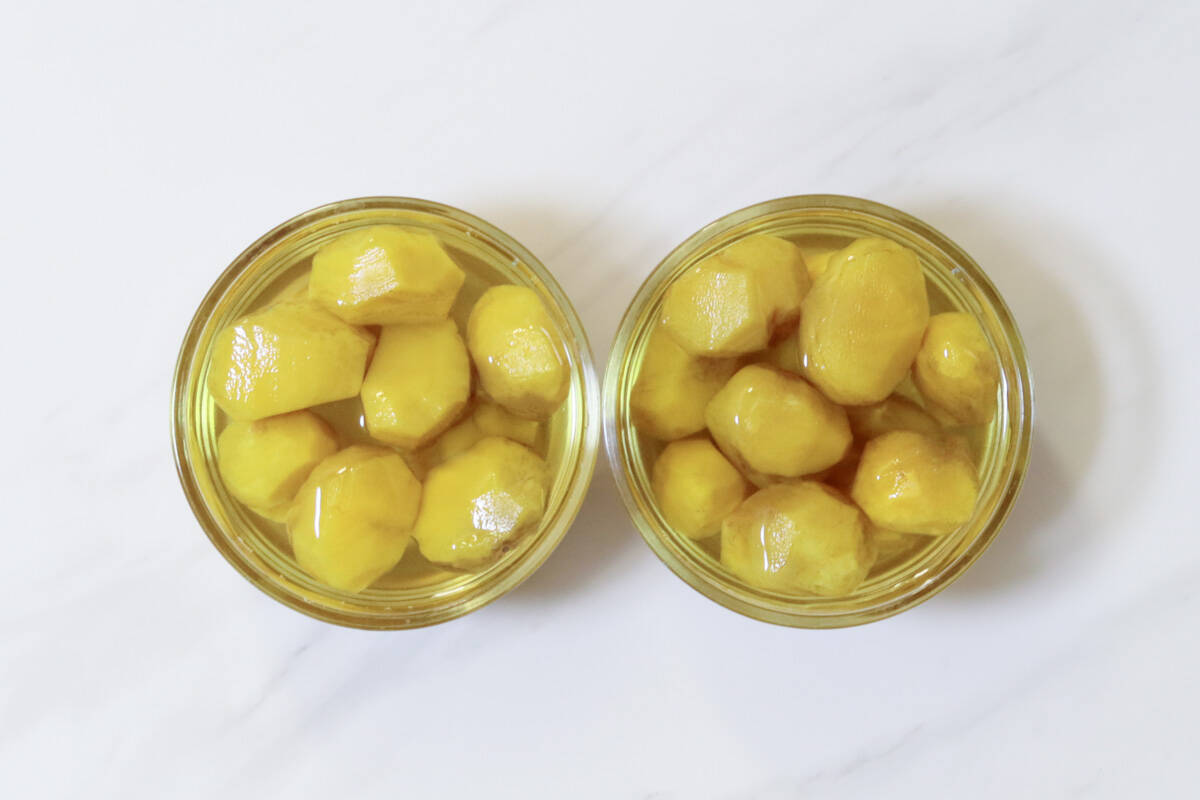
Step 6
Turn off the heat and transfer the chestnuts along with the syrup to a storage container. After the residual heat has dissipated, refrigerate them for at least half a day.
To store
You can store it in the refrigerator for up to 3 months, as long as the container is sterilized and the chestnuts are soaked in syrup.
Tips on how to make
- Soak the whole chestnuts in water or warm water. This process helps soften the outer shells, making them easier to peel.
- Remove the inner skins from the chestnuts thoroughly. By doing this, you can prevent them from appearing darker after cooking.
- Soak the peeled chestnuts in a bowl of water. This will remove any harsh aftertaste from the chestnuts. If the water becomes cloudy, replace it with fresh water.
- Simmer the chestnuts over low heat. Boiling them at higher heat might cause the chestnuts to move around in the pot and crack.
If you try this recipe, I’d love to hear what you think. Please consider leaving a review and star rating in the comments below. If you enjoyed it, I’d really appreciate it if you shared it with your friends.
Recipe card
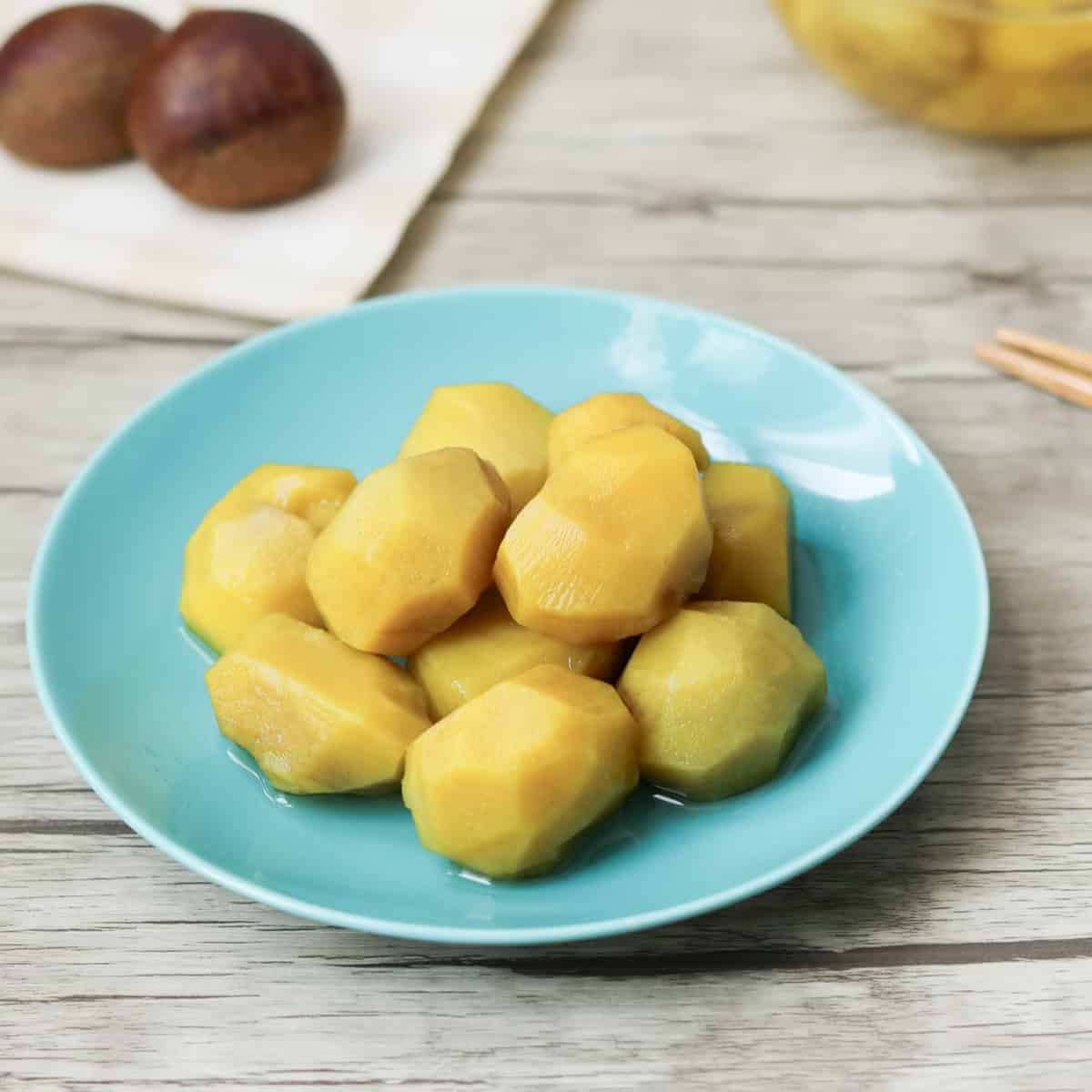
Kuri no Kanroni (Japanese Candied Chestnuts)
Ingredients
- 1 lb whole chestnuts (When using peeled chestnuts, adjust the amount of whole chestnuts to 70%.)
- 1 dried gardenia pod (optional for coloring)
- 1 ½ cups water (for the step 5)
- ⅞ cup white sugar
Instructions
- Soak whole chestnuts in water for at least 1 hour, or in warm water at around 122℉ (50℃) for 20 minutes.
- Cut off the bottom part of the chestnuts and peel the outer shells.
- Remove the inner skins from the chestnuts thoroughly with a knife. Fill a bowl with water and place the peeled chestnuts in it. Soak them for 30 minutes, changing the water when it becomes cloudy.
- Crack gardenia pod using the handle of a knife or pliers. Put water (not listed in the ingredients) in a pot and bring it to a boil. Once boiling, add the chestnuts and cracked gardenia pod, and let them simmer over low heat for 15 minutes.
- Strain the contents of the pot through a colander, being careful not to crack the chestnuts, and discard the gardenia pod. In another pot, add the chestnuts, water (as specified in the recipe), and sugar, then bring it to a boil. Once boiling, let it simmer over low heat for 20 minutes.
- Turn off the heat and transfer the chestnuts along with the syrup to a storage container. After the residual heat has dissipated, refrigerate them for at least half a day.
Notes
- If you are using peeled chestnuts, start from step 4.
- You can store it in the refrigerator for up to 3 months, as long as the container is sterilized and the chestnuts are soaked in syrup.
- The listed calorie count assumes that all of the syrup is consumed. The calorie content of kuri no kanroni alone is 190 calories per serving.


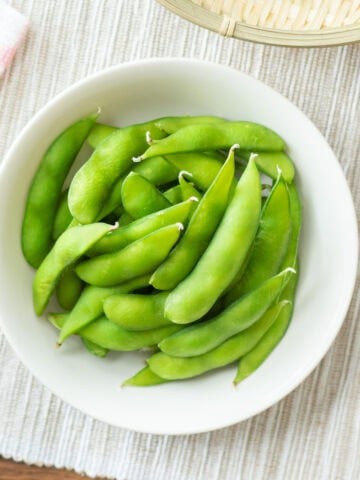
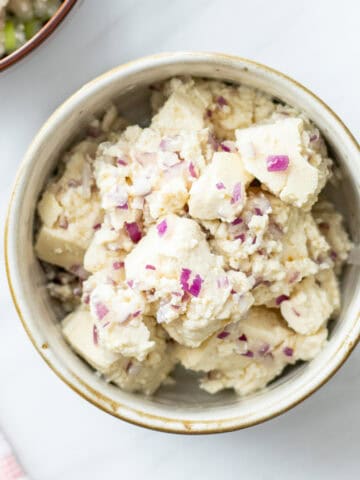
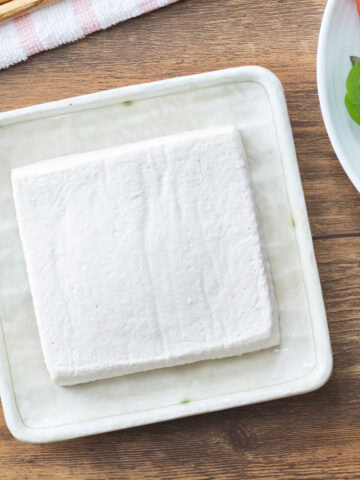
Leave a Rating and a Comment